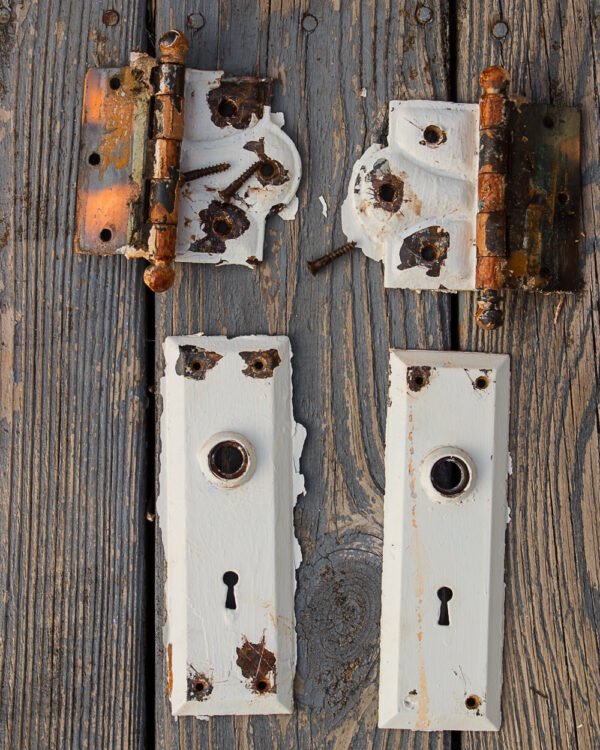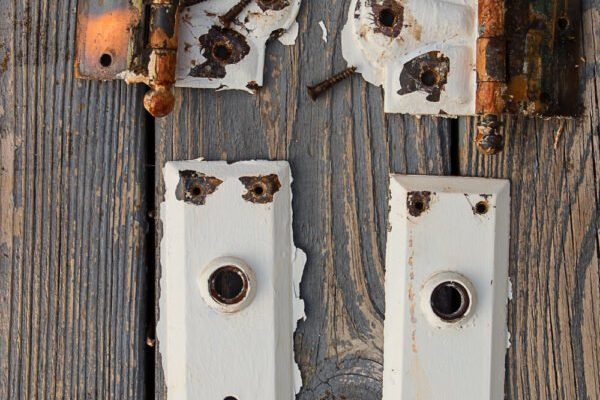
Antique hardware, whether it’s a brass doorknob or an intricate lock mechanism, tells a story of craftsmanship and tradition. These pieces often embody the style and artistry of their time, making them a significant part of your home’s history. Maintaining them is a rewarding task that not only keeps them looking their best but also ensures they last for years to come. So, let’s dive into the simple yet effective steps to clean and maintain your antique door hardware!
Understanding Your Antique Door Hardware
Before you start the cleaning process, it’s crucial to understand what type of antique door hardware you’re dealing with. Most commonly, you’ll encounter materials like brass, bronze, and iron. Each material requires specific care methods to avoid damage.
– Brass: This beautiful metal can tarnish over time, leading to a dull finish. It’s relatively easy to clean using a gentle approach.
– Bronze: Often found in more ornate pieces, bronze develops a patina that some homeowners choose to keep for character. Cleaning it improperly can strip away this beautiful finish.
– Iron: Typically used in older homes, iron can rust if not cared for correctly. Keeping it dry and using the right products is essential.
You might be wondering, “How do I know what to use?” Always check the condition first. If the hardware appears sturdy and has its original finish, stick to gentle cleaning methods. For heavily tarnished or rusty pieces, more robust solutions may be necessary, but proceed with caution.
Basic Cleaning Supplies You’ll Need
Having the right supplies on hand will make your cleaning process smooth and effective. Here’s a list of what you might need:
- Soft cloths: Microfiber or cotton cloths are gentle and won’t scratch surfaces.
- Soapy water: Mild dish soap mixed with warm water works wonders for most materials.
- White vinegar: Great for tarnish and rust, vinegar is a natural cleaning agent.
- Baking soda: A mild abrasive that helps with tougher grime without scratching.
- Clear lacquer spray: For protecting cleaned brass or bronze pieces and preventing tarnishing.
Honestly, keeping it simple is the best approach. You don’t need fancy cleaners; often, what you have at home can do the trick. Just remember, the gentler, the better for those precious antique pieces!
Step-by-Step Cleaning Process
Now that you have your supplies, let’s get into the nitty-gritty of cleaning. Here’s a clear, step-by-step guide to help you out:
1. Remove the Hardware: Carefully detach the door handle, lock, or any other pieces you want to clean. Use a screwdriver to avoid stripping any screws.
2. Wash with Soapy Water: Dip a cloth in the soapy water and gently scrub the hardware. For intricate designs, an old toothbrush can help get into those hard-to-reach spots.
3. Rinse and Dry: Wipe down the hardware with a clean, damp cloth to remove any soap residue. Make sure to dry it thoroughly to prevent water damage or rust.
4. Tackle Tarnish: For brass pieces showing signs of tarnish, create a paste with baking soda and a little water. Apply it to the tarnished areas, gently rub, and rinse.
5. Protect the Finish: Once cleaned, consider applying a light coat of clear lacquer to brass or bronze pieces to help prevent future tarnishing.
Cleaning can feel overwhelming, but taking it one step at a time makes it manageable. Plus, you’ll see instant results, which is always rewarding!
Dealing with Rust and Tough Stains
Sometimes, despite your best efforts, you might encounter rust or tough stains on your antique door hardware. Don’t fret; solutions are at hand!
– For Rust: Use fine steel wool or sandpaper to gently scrub the rusted areas. Be cautious not to scratch the surrounding metal. After cleaning, apply a rust inhibitor or oil to protect the surface.
– For Heavy Tarnish: If a vinegar soak doesn’t do the trick, mix salt into your vinegar solution. Let the piece sit in this solution for a while, then scrub gently with a cloth.
Remember, patience is key. You might need to repeat these processes a couple of times, but eventually, your hardware will shine like new. Here’s the thing: don’t rush it. Each piece is unique and may require different care.
Maintaining Your Antique Door Hardware
Cleaning is just the beginning—maintaining your antique door hardware is essential for keeping it functional and looking great. Here’s how to keep up with regular maintenance:
– Regular Dusting: Use a soft cloth to dust your hardware frequently. This helps prevent grit buildup that can lead to scratches or tarnish.
– Check for Loose Screws: Occasionally, inspect the screws to ensure everything is tight. Loose hardware can lead to damage over time.
– Avoid Harsh Chemicals: Never use abrasive cleaners or scrubbing pads, as these can ruin the finish. Stick with natural solutions when possible.
You might be wondering, “How often should I do this?” A quick dusting every month is a great start, while deeper cleaning can be done seasonally. Keeping it routine means less work later!
Seeking Professional Help
Sometimes, despite your best efforts, you may find that your antique door hardware needs more than just cleaning and maintenance. If you notice severe damage or if the hardware is particularly valuable, it might be wise to consult a restoration expert.
– Repairing Locks: If your lock isn’t functioning properly, don’t force it. A professional can assess and repair the internals without damaging the exterior.
– Refinishing: For heavily tarnished or damaged surfaces, a professional can strip and refinish pieces to restore their original beauty.
While this may come at a cost, it can save you from making mistakes that could diminish the piece’s value. Remember, these pieces often carry sentimental value, so it’s worth investing in their care.
Maintaining and cleaning antique door hardware is more than just a chore; it’s about preserving a piece of history. By following these straightforward steps, you’ll ensure these unique pieces continue to add charm to your home for years to come.
Whether you’re just starting on your antique journey or you’ve been a collector for years, know that taking care of these treasures is both a privilege and a responsibility. So grab your cleaning supplies and give your hardware the love it deserves! It might seem like a small task, but every bit of care contributes to its lasting legacy.
